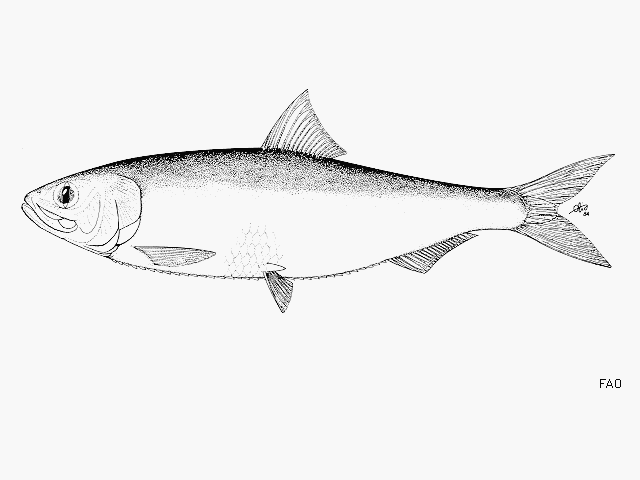| Alosidae (Shads and Sardines) |
| 33.2 cm TL (male/unsexed); 33.8 cm TL (female); max.weight: 331.7 g; max.weight: 347.2 g; max. reported age: 6 years |
|
pelagic-neritic; freshwater; brackish; marine |
| Eurasia: Black Sea and Sea of Azov. |
|
Dorsal spines (total): 0-0; Anal spines: 0-0. Body fairly elongate, more `herring-like' than `shad-like'. Gill rakers thin and straight, often closely packed and pointed, usually shorter than gill filaments. Teeth well developed in both jaws. Other Black Sea Alosa have more gill rakers (A. caspia 50 to 80 and A. pontica 47 to 66). Sardinella aurita is more slender, has many more gill rakers and i 8 pelvic fin rays. |
| Non-anadromous, entering limans and lower parts of river deltas, but only occasionally in freshwater. They are more or less abundant in lower reaches of rivers and coastal lagoons. A cold-loving species, tolerating 3 or 4°C.(Ref. 188). At sea, pelagic in deep water and enters brackish lagoons to spawn. Mature adults spawn first at 2 years and many individuals spawn for 2-4 seasons. Eggs sink to bottom. Spent individuals return to the sea to feed. In autumn, they migrate to southern Black Sea to overwinter. Juveniles migrate to the sea or estuaries during the first summer (Ref. 59043). Adults feed mainly on small fishes (mainly sprats and anchovies) also on shrimps, gammarids and other large crustaceans (Ref. 188). In northern Black Sea, the decline in habitat quality in suitable estuarine ecosystems is expected to have an impact in the immediate future (Ref. 59043). |
|
Least Concern (LC); Date assessed: 01 January 2008 Ref. (130435)
|
| harmless |
Source and more info: www.fishbase.org. For personal, classroom, and other internal use only. Not for publication.

